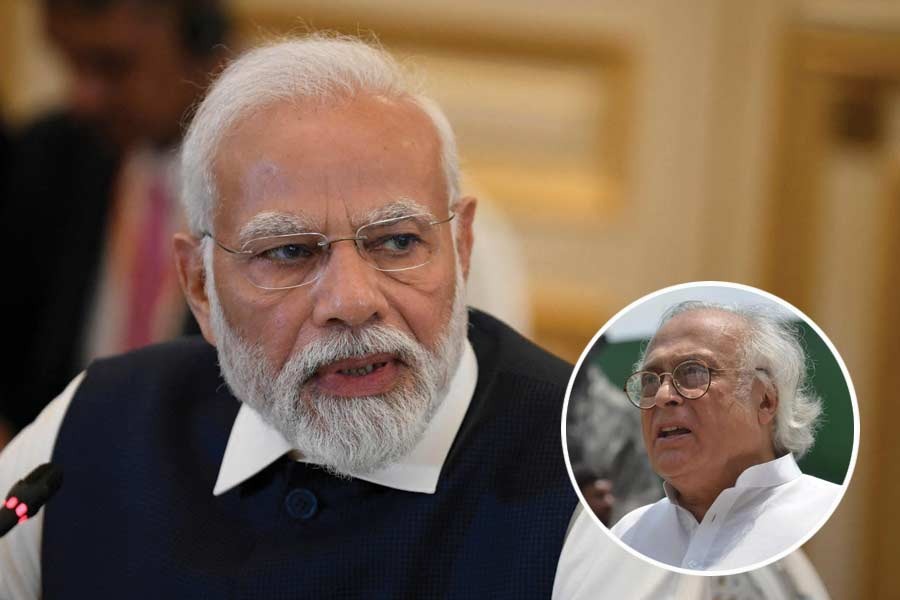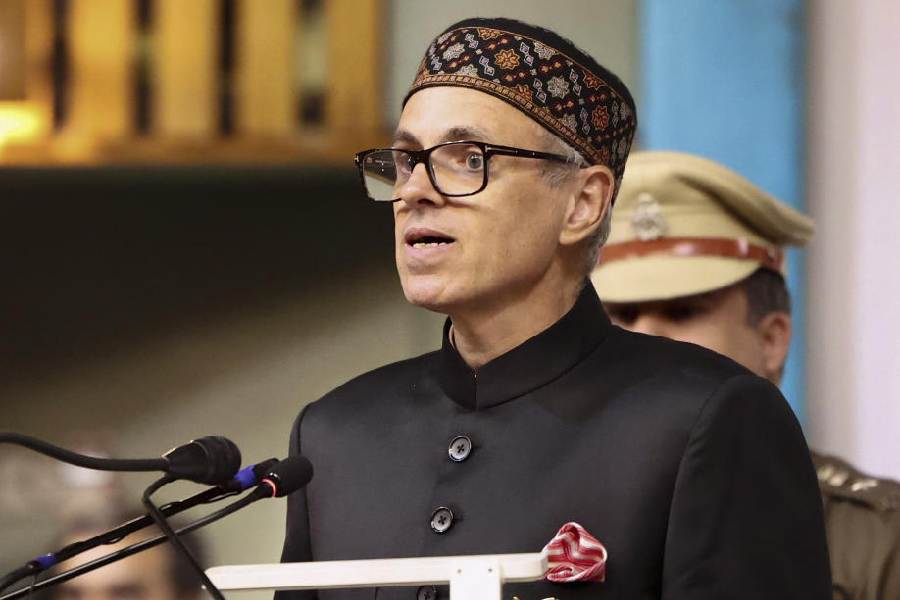There was a time, just a few years ago, when recent events in Bangladesh were a cause for celebration. After decades of famine and war and natural disaster, the country had achieved the longest life expectancy and the lowest fertility rate in South Asia. From 1990 to 2010, the rate of infants who suffered an early death fell by more than half. Over 90 per cent of tuberculosis cases were being cured. Long series in The Lancet and The Economist expressed admiration and wonder at these transformations. The latter compared contemporary Bangladesh to Meiji Japan, which enacted "the most dramatic period of improvement in human health in history."
This progress remains incomplete. Bangladesh is still one of the most malnourished places in the world. Well over a third of the country's children are "stunted", the technical term for being intensely and chronically undernourished. The sundry permanent effects include a lifelong reduced cognitive capacity. Within Bangladesh, child stunting is worst in the northeastern division of Sylhet, where Helen Keller International has reported the rate to be fully 50 per cent.
I recently travelled to Sylhet with HKI, one of the foreign NGOs combating malnutrition there. Around 20 kilometres away from the provincial capital of Habiganj, and beyond the outskirts of the town of Nabiganj, I visited three remote villages struggling with extreme malnutrition. Every last child in the area I met had the underdeveloped bodies, and particularly the skinny arms, that are the telltale signs of stunting.

In other respects as well, Madhobpur, Manderkandi and Sreemotpur seem to epitomize rural South Asian poverty. The cows are skinny and sickly; medical clinics lack electricity; the local water has as much as 100 times the safe limit of arsenic. So it was a jarring moment when a bunch of children saw my group approach and produced smartphones to photograph their visitors (picture, above). Globalization had brought advanced mobile operating systems, but not adequate protein.
This was evidence of the contradictory nature of development in Bangladesh more generally. Sylhet is a relatively rich district with, reportedly, Bangladesh's worst stunting rate; the southwestern district of Khulna, conversely, has one of the highest poverty rates in the country and also one of the lowest stunting rates. "'The Sylheti paradox' is what we call it in our office," said Nicolas Syed, a United Nations official working on rural poverty in Bangladesh.
The Sylheti paradox is a measure of the degree to which standard metrics of development and positive social outcomes may be disconnected. On the one hand, the remarkable success of Bangladesh in improving the well-being of its citizens has been strikingly detached not only from nutrition but also from economic growth, which has not been as dramatic as the health statistics suggest. The Economist pointed out that the average Bangladeshi lives four years longer than the average Indian, even while Indians are twice as rich. In explaining many of the most basic improvements in the everyday lives of Bangladeshis, wealth seems curiously tangential.
The miserable health of Sylhetis exemplifies exactly what money alone may not bring. An enterprising people once known as sailors, the Sylhetis were reported by The Guardian to make up 95 per cent of the Bangladeshi population in the United Kingdom. In both New York and London, a vast majority of "Indian" restaurants are actually run by Bangladeshi Sylhetis. A great deal of the money made by Sylhetis abroad returns to their homeland. Twenty years ago, Habiganj lacked phones and roads; it used to take one or two days of travel by foot or boat just to reach an adjacent upazila, or county. When I stayed in the city a few months ago, my new hotel offered free WiFi, and I experienced no trouble driving from place to place.
Yet these advancements have had surprisingly little effect on the health and diet of most Sylhetis. Sylhet is full of haors, floodplains underwater for so long that even well-maintained gardens often don't last over half the year. Many locals live on little hills surrounding the haors, which means they have trouble receiving basic services every year when their home becomes an island. Meanwhile the dense, tropical soil in Sylhet is not well-suited to agriculture, and a lack of crop rotation has led to a dire nitrogen deficiency.
Culturally, Sylhet has a long history of religiosity and conservatism. Shah Jalal, the preacher who spread Islam in Bengal in the 13th and 14th centuries, lived in Sylhet, and his tomb is an important site for pilgrims. According to research cited by the Asian Development Bank, 60 per cent of Sylhetis pray daily, as compared to 35 per cent countrywide. In 2004 and 2005, Sylhet faced multiple Islamist terror attacks.
Both religious and social conservatism have had a negative effect on the health of Sylhetis. As in other South Asian cultures, women tend to eat at the end of meals, after the men and children have their fill, leaving poor women only meagre leftovers. During my visit to Manderkandi, a leader of HKI's garden program named Chaiti was showing off her chickens. After a few minutes, one of her male in-laws, Shamanandha Vattacharjo, nudged her out of the way to take over the tour. The economist, Binayak Sen, among others, has demonstrated the strong correlation between female empowerment and nutrition in Bangladesh. Khulna, the poorer yet healthier district, also boasts a much higher level of female education than Sylhet.
This link between female empowerment or education and family nutrition is evident in villages all over the district of Habiganj. According to local HKI officials, some of whom are from the area, many pregnant women refuse to eat protein out of fear that their babies will grow too big and make for an uncomfortable childbirth. Once born, children frequently do not receive sufficient breastfeeding for the first six months of their lives. The better-educated mothers of Khulna ensure that their children have notably diverse diets; in Sylhet, the lack of adequate breast milk is only one way in which babies and infants are deprived of essential nutrients. Until their teeth are strong enough, for example, children are not fed the small fish that Sylhetis eat whole, bones and all. In Manderkandi, Vattacharjo told me that these fish, caught in a muddy pond nearby, have been the area's only source of protein.
Many of the relatively wealthier residents of Habiganj city suffer from similarly skewed diets. I had a glimpse of the city's eating habits at the restaurants Sky Queen Chinese and Mango, which is brand new and maintains an active Facebook page. Neither restaurant served a single dish with a healthy amount of vegetables, and most orders came with only scraps of protein. Across Bangladesh, malnourishment is not only a problem for the lower class: in the wealthiest quintile of society nationally, 21 per cent of children were underweight in 2010, according to The Lancet.
If economic development is not solving malnutrition in Sylhet, what can? During my visit, I saw numerous ways in which NGOs improve the health of Sylhetis through modest interventions. (Here I should state an interest: an old friend of mine works for Helen Keller International, and I travelled with her to Sylhet, where HKI set up its project to combat malnutrition last year.)
Not everyone in Bangladesh views foreign NGOs in the benevolent way they view themselves. Their strength and size have drawn criticism from those who charge that they disregard the national government as well as local power structures, leading to grassroots resistance, waste and NGOs exaggerating their achievements. The anthropologist, Lamia Karim, has argued that NGOs co-opted Bangladesh's intelligentsia and the allegiance of its poor, defanging overtly political left-wing resistance to the inequalities of the country.
More troublingly, many of the recent terror attacks in Bangladesh have specifically targeted foreign citizens, including Japanese aid workers at the Holey Artisan Bakery and an Italian aid worker out for a jog. These killings may already be achieving their desired effect. "They are leaving," Jillian Waid, leader of HKI's local research unit, wrote me of her fellow NGO expats. The United States Agency for International Development and Britain's Department for International Development have both, according to Waid, withdrawn their employees with families. Waid herself, who has worked in Bangladesh for the past seven years, now intends to get out soon.

On my trip, I saw examples of the substantial small-scale help that has been provided over the years by foreign groups like HKI, Save the Children, and USAID, all of which are fighting malnutrition in Sylhet. In each village I visited, new gardens were producing nutritious vegetables such as okra and bitter gourd (picture, above). Where white-fleshed sweet potato has been common, HKI was helping to introduce a much healthier orange-fleshed sweet potato in its stead. The organization was also trying to popularize kangkong, a spinach that grows even in the watery soil of the haors.
In Madhobpur, HKI had staged a test in which three separate plots showed the results of planting using the village's customary methods alongside two different natural fertilizers introduced by HKI. The difference was stark: large plants had grown in the second two plots, while the first was nearly bare. Popy Rani, a village mother who told me she had initially been sceptical of HKI, said she was persuaded to set up her own new garden after looking at the flourishing plants of a neighbouring village.

HKI has led many other initiatives: classes on breast-feeding and preparing children well-rounded meals, for instance (picture, above), and financial help and instruction with poultry farms. The most concrete symbol of the potential of its efforts is the humble "tippy-tap". This is a plastic bottle tied to a post at an angle so that, if the top is unscrewed, air pressure causes a stream of water to pour out through a hole at the bottom of the bottle. The rest of the time, when the top is screwed on, the bottle retains its water. The tippy-tap is, in effect, a home-made faucet. In Sreemotpur, nobody used to wash their hands because of all the water wasted by pouring it out from a bucket. Now, a bar of soap and a tippy-tap stand at the centre of the village as basic tools of everyday life.
In 1974, Bangladesh was a brand new state facing a famine while its government teetered on the brink of collapse. International aid shot up, and Bangladesh welcomed foreigners who said they wanted to improve the lives of Bangladeshis in ways the shaky government could not. The significance of aid efforts launched from abroad have since been surpassed by domestic groups, especially Grameen Bank and BRAC, which have collectively acquired well over 10 million microfinance borrowers. Grameen has also founded the country's leading telecommunications service, with over 56 million subscribers, while BRAC has established 400 legal aid centres and over 22,000 primary schools. Grameen and BRAC are not going anywhere anytime soon.
Still, in places such as Sylhet, neither market forces nor the State and its domestic surrogates have supplied some of the basic necessities of a good life. Foreign NGOs bring expertise, initiative, and funding that are intensely needed. As murderous attacks on aid workers grow more frequent, the continuation of their work is imperiled. Bangladesh is on its way to providing unprecedented good health to a wide array of its citizens - but much more remains to be done. These are the stakes for a country whose violent fringe is beginning to drive the rest of the world away.










